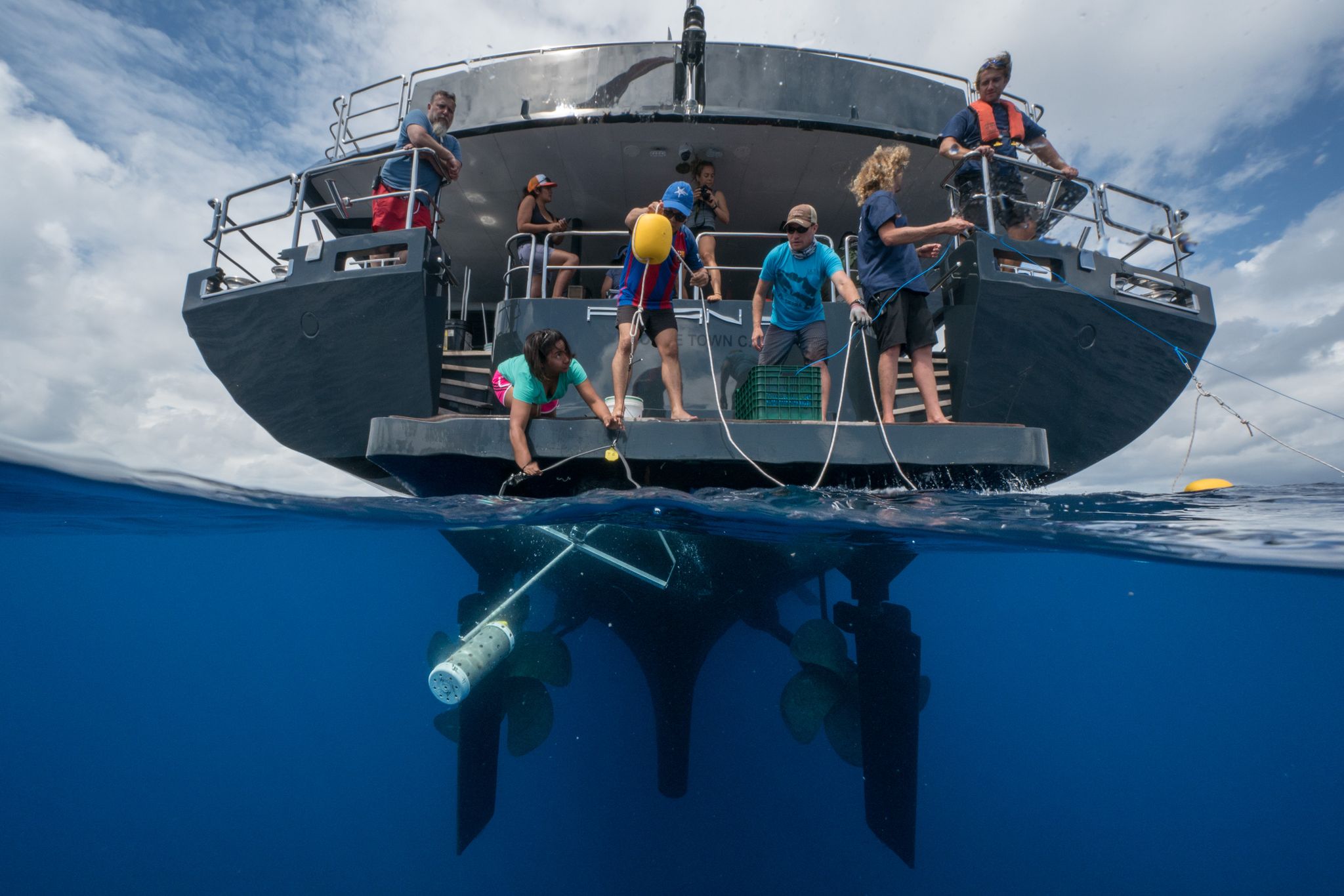
Coco Galapagos 2018
Background
The Eastern Pacific Ocean is an area of high productivity where various marine protected areas (MPAs) have been designated around coastal and oceanic islands in order to ensure the sustainability and resilience of these hotspots of marine biodiversity. The Cocos Island National Park in Costa Rica and the Galapagos Marine Reserve in Ecuador are two of the MPAs in which a higher biomass of top predators has been recorded. However, in recent years a marked population decline of migratory pelagic species, such as sharks, rays and sea turtles, has been detected in both MPAs.
The Cocos Ridge is an underwater mountain formation of more than 1,000 km in length that joins coastal Costa Rica, Coco Island and the Galapagos Islands through a series of seamounts of different sizes and depth ranges. Seamounts have been shown to be highly productive topographic structures capable of supporting complex pelagic communities in open and deep waters. Therefore, seamounts can play a critical role for top predators in a resource-poor habitat, such as the open ocean, by offering foraging opportunities and refuge. There is also evidence that seamounts play an important role in the navigation of some pelagic species during migrations.
The seamounts of the Cocos Ridge are of biological importance for pelagic species that move between the Cocos and the Galapagos Islands. However, there are no studies that demonstrate the biological importance of seamounts in this region, mainly due to their remote location and the logistical difficulty to monitor this type of pelagic environment.
Expedition Route
Expetidion goals
This expedition aimed to provide a first assessment of the biological importance of the seamounts of the Cocos Ridge for migratory pelagic species through the use of remote pelagic underwater cameras with bait. The specific objectives were:
- Quantify the abundance, diversity and distribution of pelagic species in the seamounts between Cocos Island and the Galapagos Islands.
- Determine the effect of depth and temperature on the distribution and abundance of pelagic species in seamounts.
- Evaluate the effectiveness of the pelagic version of remote bait cameras to monitor pelagic species in the study area.
The science at each stop
The Team




